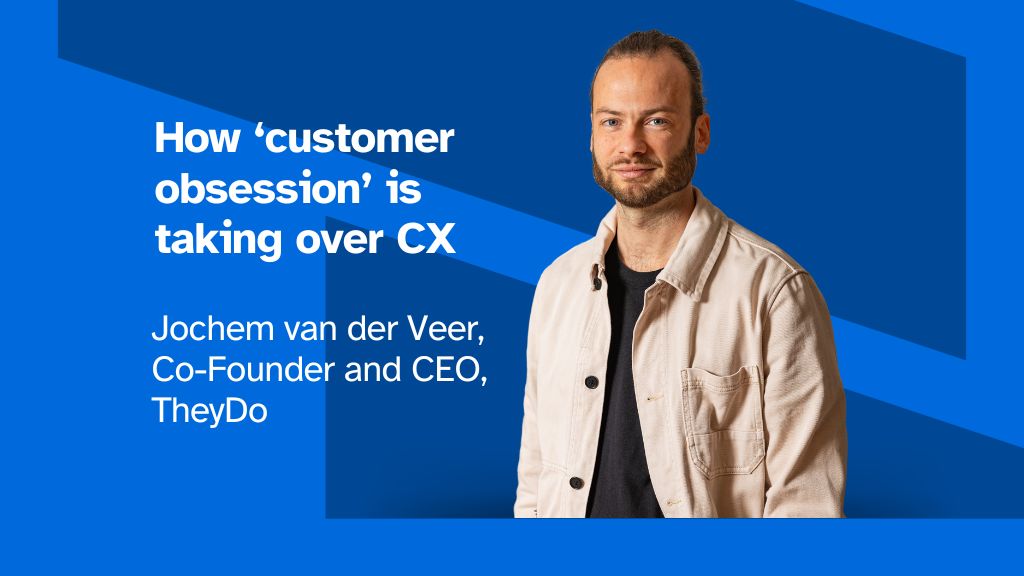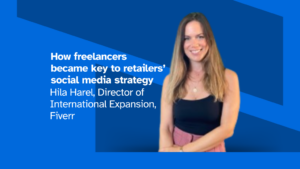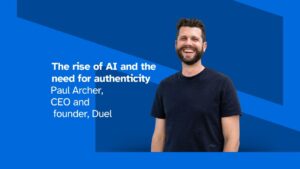By Jochem van der Veer, Co-Founder and CEO, TheyDo
How many times have we heard the term customer centric? It seems every company from small businesses to global enterprises claims to be customer centric today, so much so that the term is losing its meaning. Customer experience (CX) has been around for long enough that we all recognize the value of the customer, but when customer centric becomes the default standard across the business landscape there’s no opportunity for businesses to stand out from the crowd. CX innovators stood up to the challenge and have pioneered an elevated level of CX to aspire to that Forrester has dubbed: customer obsession.
Levelling up from customer centricity, customer obsession is centred around inserting the customer into every business decision. And the buzzword is catching on – The Times ran a feature profiling Rami Baitiéh the new CEO of Morrisons, on his customer-obsessed approach to transforming the supermarket chain. Once a strategy of customer obsession was in place, Morrisons profits were boosted to its best performing quarter in 13 years. The data also supports customer obsession, with companies adopting the approach experiencing two times higher profitability, customer retention and revenue growth, as per Forrester. With such profound business impact, it’s time for business leaders to start obsessing over their customers.
A guide to Customer Obsession
So, you want to be customer obsessed but don’t know how? It all comes down to listening to your customer. To garner an in-depth understanding of what your customer needs, thinks and feels, you must talk to your customers regularly. The perfect example of this is the aforementioned Baitiéh at Morrisons, who mandated a panel of customers be present at any important meeting. By doing so, the customer voice is taken into consideration in every business decision and their presence encompasses the whole organisation, not just sprinkled here and there. Through his customer panel, Baitéh was able to decrease the number of customer complaints to 8,000 per week, down from 22,000.
Following a similar vein, CEO of Float Rob Khazzam attributes his business’ success to understanding what the customer really needs. You do this by putting yourself in the customers’ shoes— something I have been able to do thanks to my experience as a designer. In fact, the motivation for founding TheyDo came from being a frustrated user myself. As a designer, I frequently encountered the ‘transformation trap’, companies throwing away millions by launching new products, campaigns and services that were misaligned with what anyone wanted because they were working inside-out. I have felt first-hand the pain points that many of our customers face.
Journey management
For customer obsession to be effective it needs to be implemented systemically, it’s more than just an attitude or commitment. Customer journey management is the tool business leaders need to enact regular customer-insights-backed innovation at scale. Customer journey management brings together quantitative and qualitative customer feedback and insights to document, design and iterate your CX over time. This methodology consciously keeps the customer at the centre of every decision from the most high-level to the granular, day-to-day details.
Through journey management, all your business operations are formed around the customer journey, naturally leading to customer obsession. In fact, if you want to be truly obsessed, your customer’s journey should be your number one product. Thinking about a commoditised market, the only way to really differentiate from the competition other than price is through the CX — “There is no business if we don’t serve our customers better than anyone else in the market,” agrees Khazzam.
The path to customer obsession lies in customer journey management, which facilitates a collective understanding of the customer across, crucially, all functions and departments of the organization. When every employee is completing their tasks with the customer in mind, journey management is the enabler between customer obsession and business value.
What’s preventing customer obsession?
Businesses have grown too comfortable with the customer-centric label, and it is this complacency that prevents them from elevating their experience to the next level of customer obsession. Carelessly using customer-centric phrases within your organisation is not enough. We all know the customer voice is important, but that recognition has no impact without action. Go that extra mile; there’s a difference between striving for a better CX and delivering a ten-times better CX. Building a practical strategy around customer obsession will make that difference.
Business leaders must balance many competing priorities. Despite wanting to be customer obsessed, it is easy to succumb to the pressure of following what competitors do rather than what customers are saying. An organization may understand the value of CX but competitors still occupy the top spot of focus. A tempting distraction, many companies’ strategies end up as customer aware, competitor obsessed. Tunnel-vision on performance against competitors and market share risks missing the bigger picture of your company’s success and who that is driven by. Take Jeff’s Bezos famous quote as advice, “we’re not competitor obsessed, we’re customer obsessed. We start with what the customer needs; and then we work back from there.”. Bezos and other customer-obsessed leaders are confident they receive the most relevant perspective on market awareness from their customers.
A win-win outcome
To avoid growing complacent with a customer-centric approach, companies need to intentionally introduce customer obsession across all sectors of the organisation. By letting your customer voice influence all business decisions, your CX will be elevated above the crowd of a commoditised market. Through customer journey management, companies can transform a customer-obsessed attitude into an actionable strategy that produces the best experience possible for the customer and value and profit for the business.








